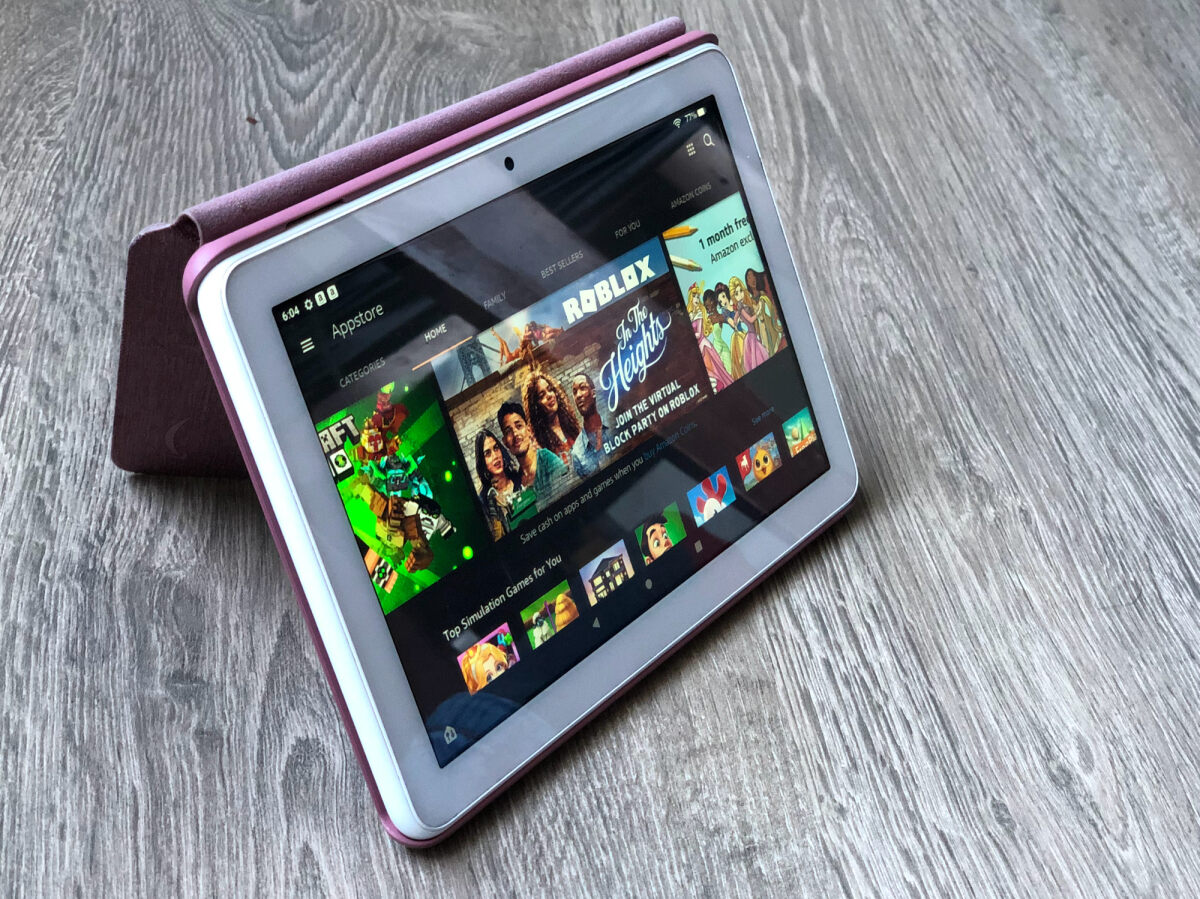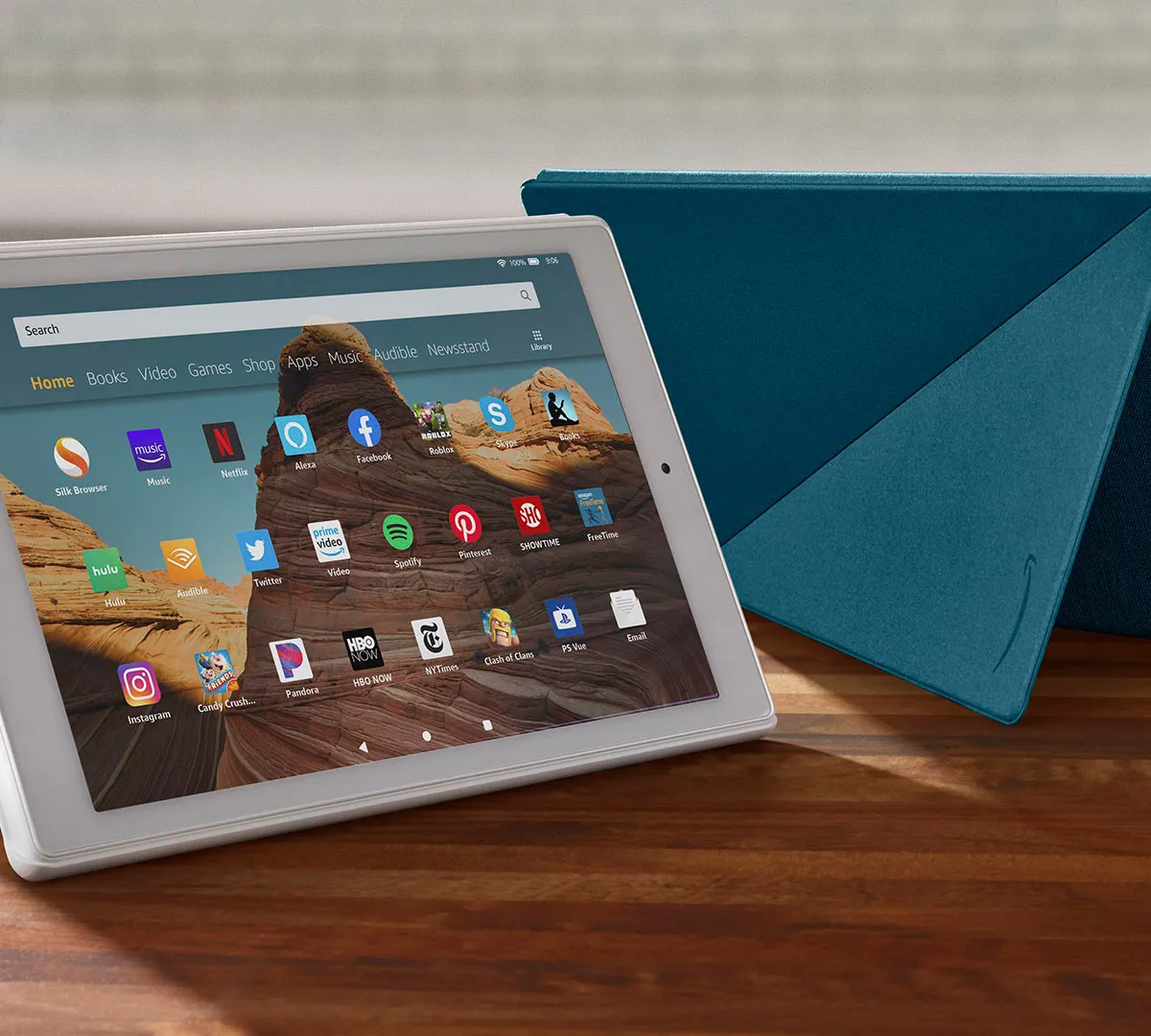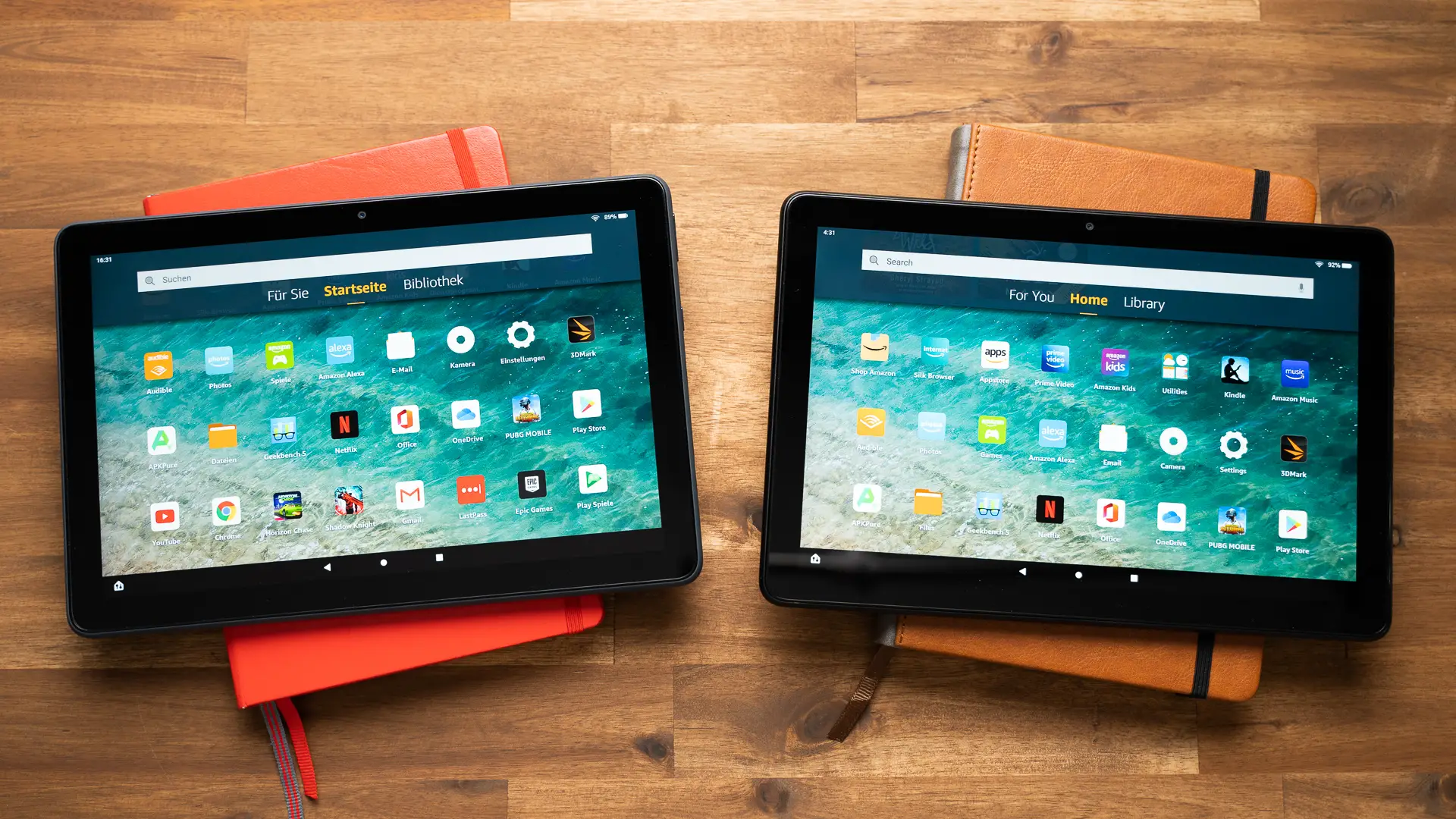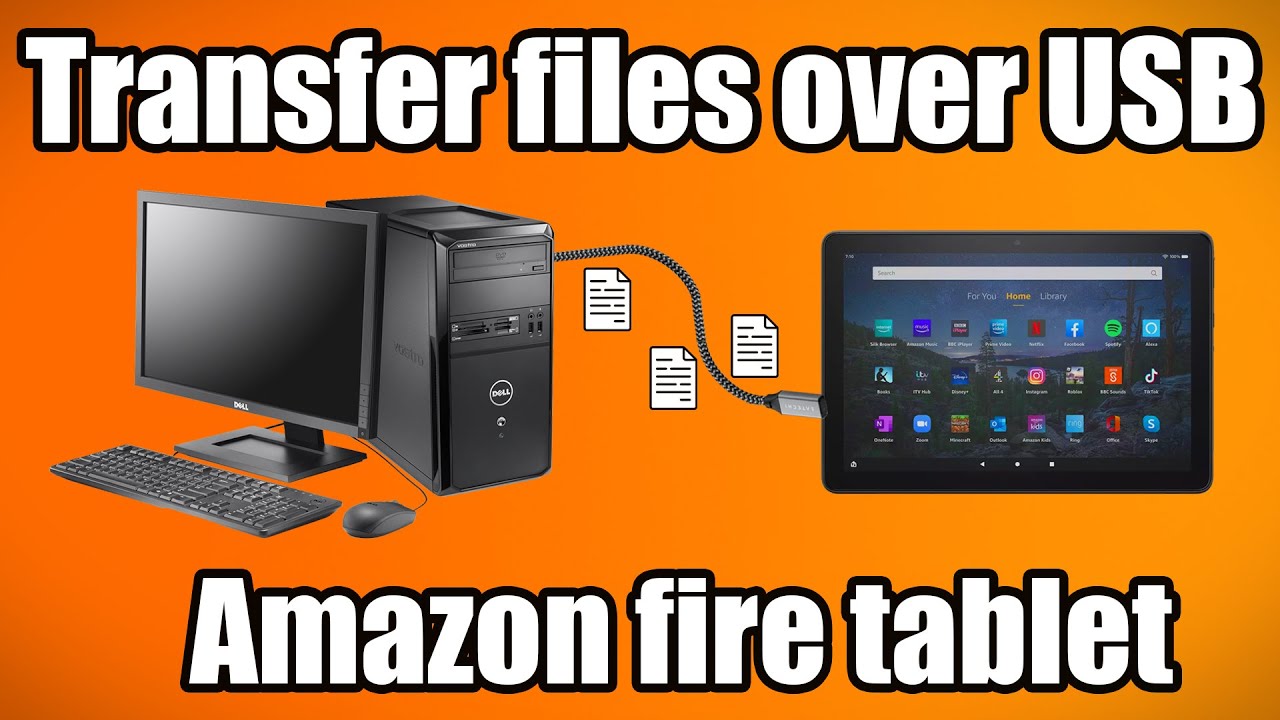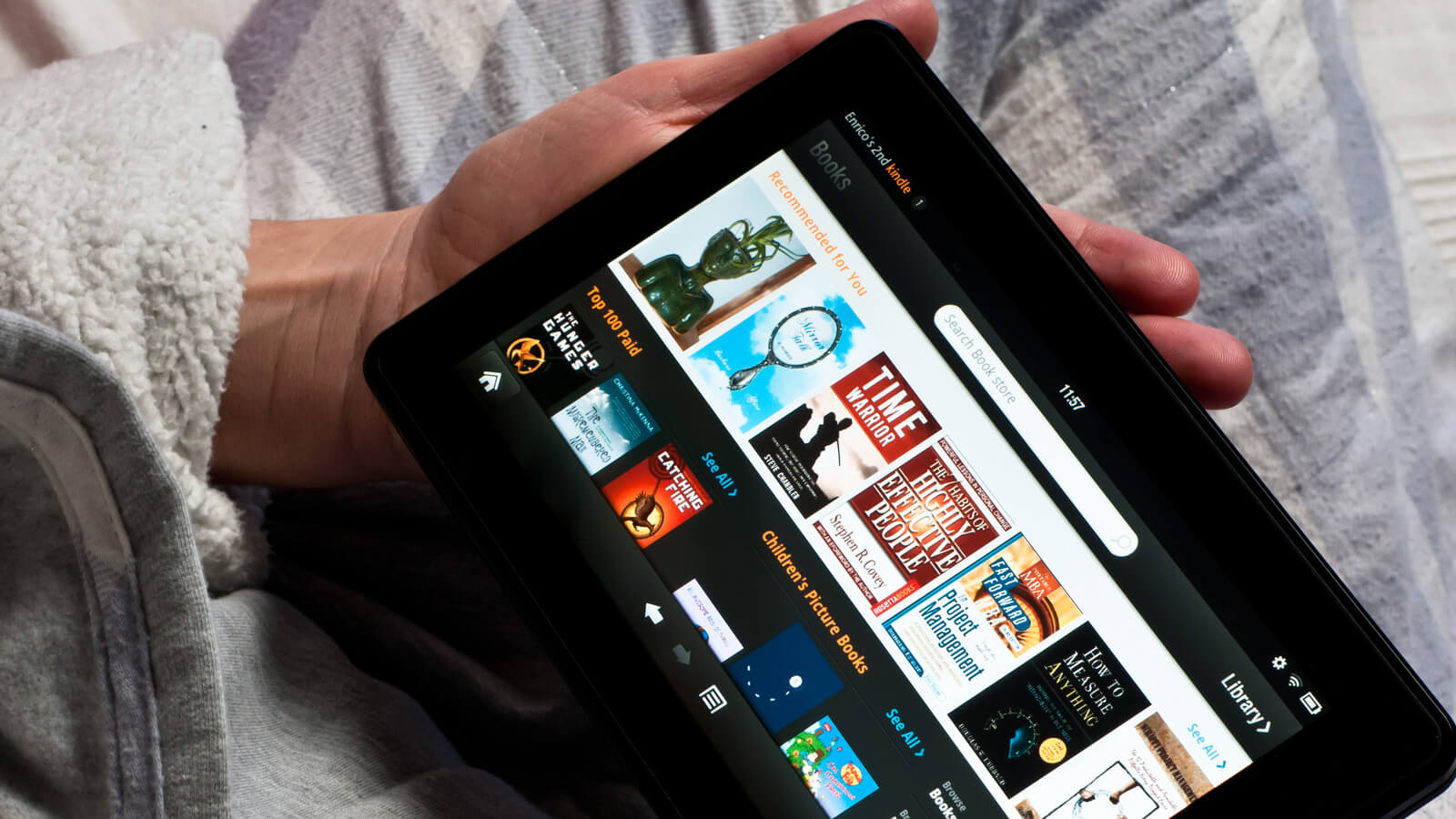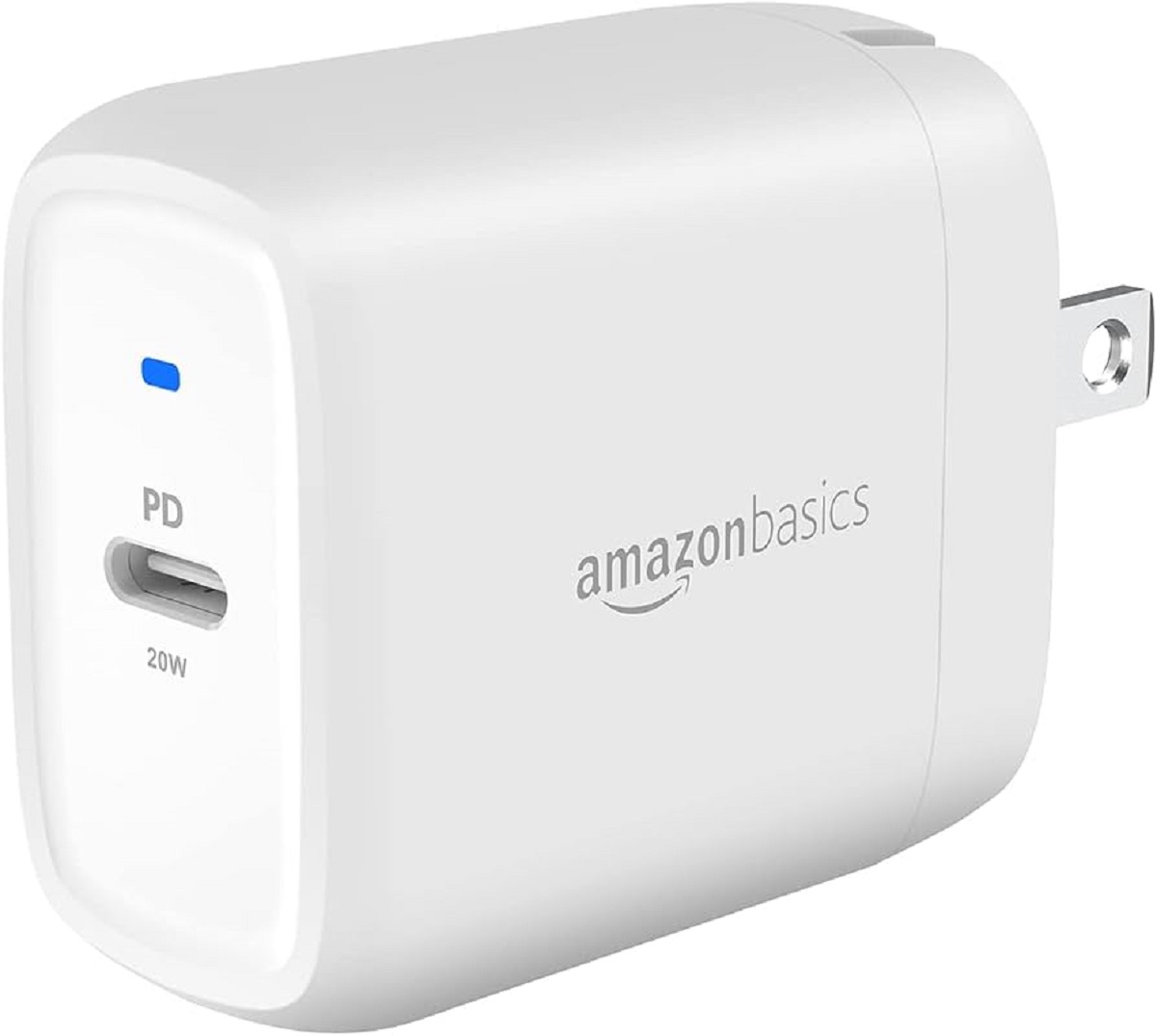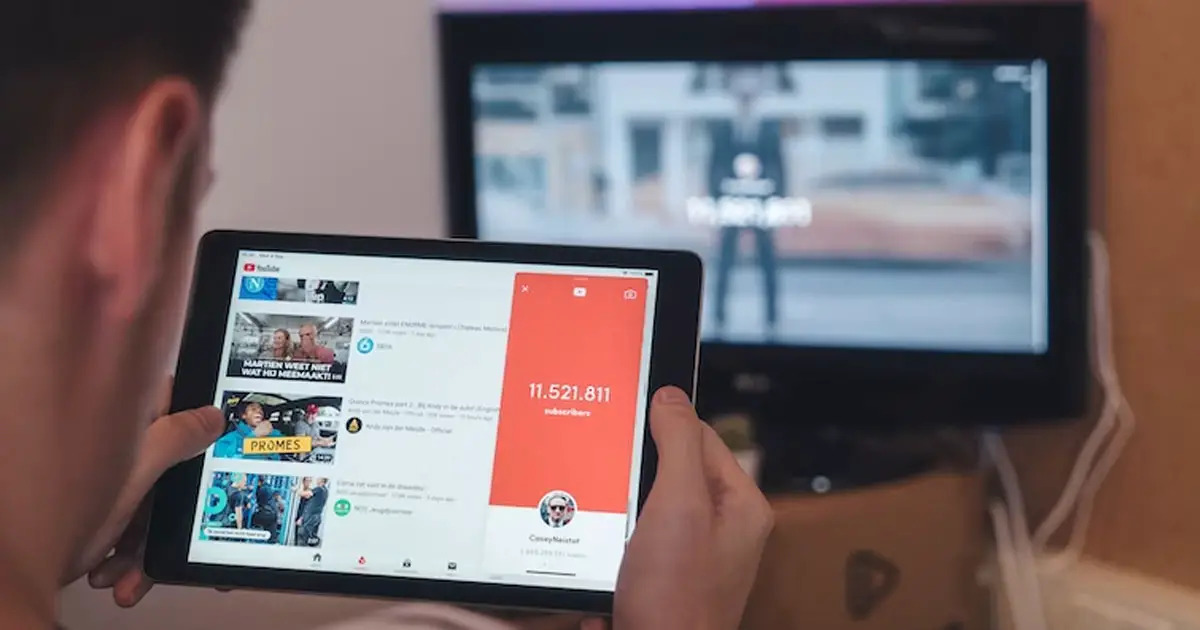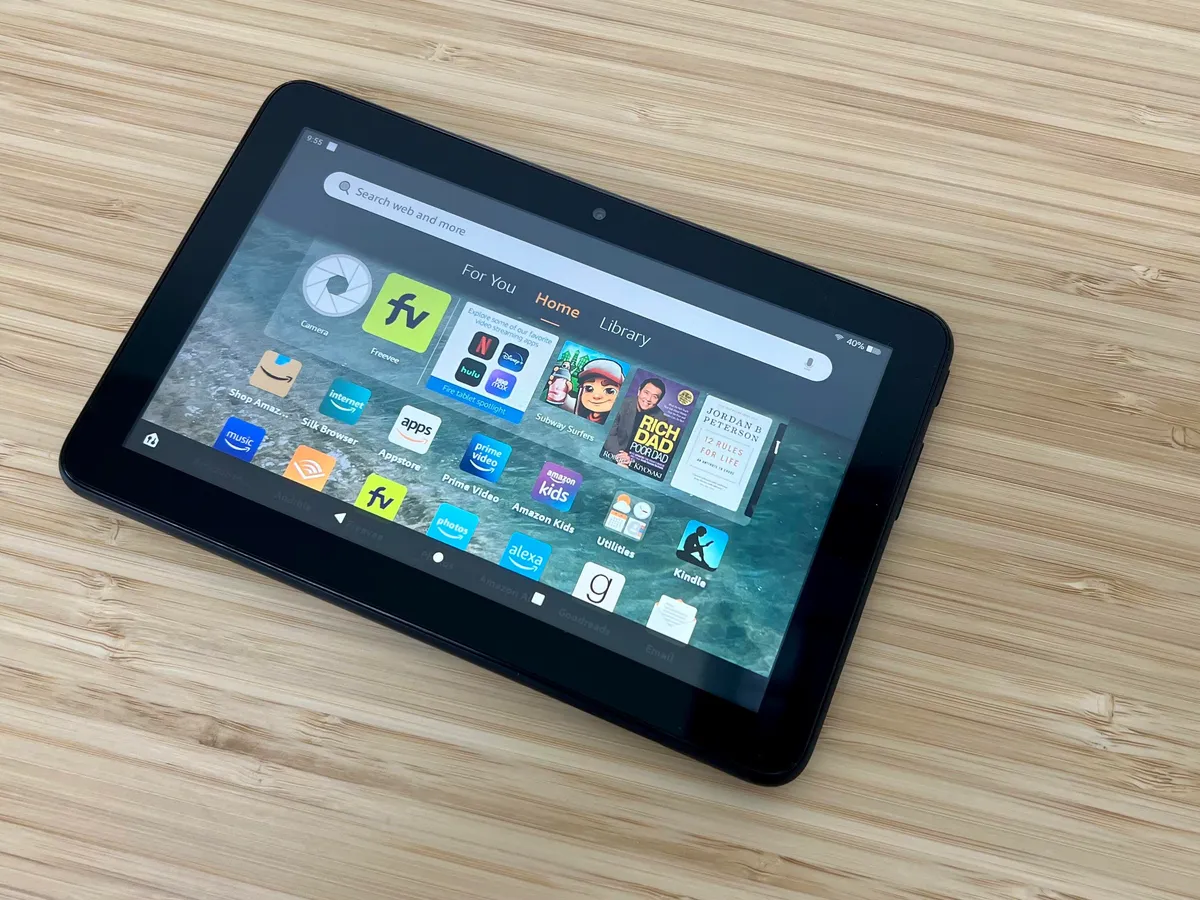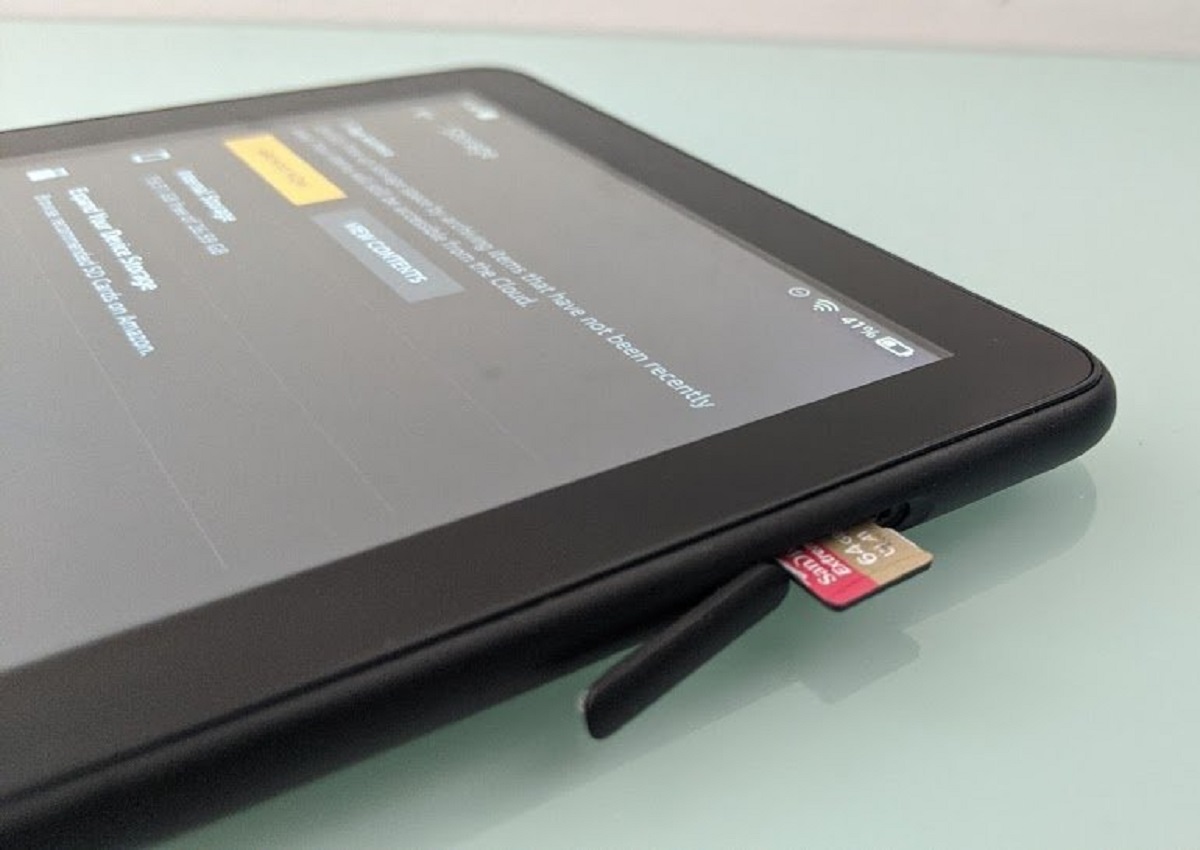Introduction
The Amazon Fire Tablet is a popular device known for its affordability and functionality. However, over time, you may notice that your Fire Tablet starts to slow down, affecting your overall user experience. But fret not, there are several effective ways to speed up your Amazon Fire Tablet and restore its performance.
Whether you’re using your Fire Tablet for browsing the internet, streaming videos, reading e-books, or playing games, a slow device can be frustrating. The good news is that you don’t need to invest in a new tablet to resolve this issue. By implementing a few simple techniques, you can optimize the performance of your Fire Tablet and ensure smooth and speedy operation.
In this article, we will explore ten practical methods to speed up your Amazon Fire Tablet. These methods range from clearing cache and data to optimizing storage space, and each one contributes to enhancing the overall performance of your device. So, let’s dive in and discover the steps you can take to turbocharge your Fire Tablet!
Clearing Cache and Data
One of the common reasons for a sluggish Amazon Fire Tablet is the accumulation of cached data and temporary files over time. These files can take up storage space and slow down the device’s performance. By clearing the cache and data regularly, you can free up space and improve the speed of your Fire Tablet.
To clear the cache and data on your Amazon Fire Tablet, follow these simple steps:
- Go to the Settings menu by swiping down from the top of the screen and tapping on the gear icon.
- Select “Storage” or “Device Options” (depending on your device model).
- Tap on “Internal Storage” or “Storage” (again, depending on your device model).
- Scroll down and select “Cached data”.
- Confirm the action by tapping on “OK”.
Clearing the cached data will remove temporary files and free up storage space on your Fire Tablet. This can help improve performance and speed up various processes, such as app launching and browsing.
Additionally, you can also clear app data for specific applications that you no longer use or that are consuming a significant amount of space. To do this, follow these steps:
- Go to the Settings menu and select “Apps & Notifications”.
- Tap on “See all apps” or “App info” (depending on your device model).
- Choose the app you want to clear data for.
- Tap on “Storage & cache”.
- Select “Clear storage” or “Clear data”.
By regularly clearing cache and data, you can maintain optimal performance on your Amazon Fire Tablet and ensure a responsive user experience.
Restarting the Device
Restarting your Amazon Fire Tablet is a simple yet effective way to improve its performance. Just like any electronic device, the tablet can encounter temporary glitches and issues that can slow down its operations. A quick restart can help resolve these problems and refresh the system for smoother functionality.
To restart your Amazon Fire Tablet, follow these steps:
- Press and hold the power button located on the top or side of the device.
- A power menu will appear on the screen.
- Select “Restart” or “Reboot”.
- Wait for the device to turn off and then turn back on again.
Restarting your tablet clears the device’s temporary memory and closes any running apps or processes that may be responsible for its sluggish performance. It also helps to establish a fresh connection with the software and hardware components of the device, optimizing its performance.
It is recommended to restart your Amazon Fire Tablet periodically, especially if you notice any slowdowns or performance issues. This simple action can make a significant difference in the device’s speed and responsiveness, helping you to fully enjoy your Fire Tablet experience.
Removing Unnecessary Apps and Files
Over time, your Amazon Fire Tablet may become cluttered with unnecessary apps and files that take up valuable storage space and hinder its performance. By removing these unwanted items, you can free up space and improve the speed and efficiency of your device.
To remove unnecessary apps on your Amazon Fire Tablet, follow these steps:
- Go to the Settings menu and select “Apps & Notifications”.
- Tap on “See all apps” or “App info” (depending on your device model).
- Choose the app you want to remove.
- Tap on “Uninstall” or “Disable” (if uninstalling is not an option).
- Confirm the action by tapping on “OK”.
Removing apps that you no longer use or need can optimize the device’s performance and free up storage space. This, in turn, speeds up app launches, reduces the strain on system resources, and enhances overall responsiveness.
In addition to removing apps, it’s also essential to delete unnecessary files, such as old documents, photos, videos, and downloads. Follow these steps to remove files on your Fire Tablet:
- Open the “File Manager” or “Documents” app on your device.
- Browse through the folders and locate the files you want to delete.
- Tap and hold on a file to select it, or use the checkboxes to select multiple files.
- Tap on the “Delete” or “Trash” icon to remove the selected files.
- Confirm the action by tapping on “OK”.
By regularly eliminating unnecessary apps and files, you can declutter your Amazon Fire Tablet and optimize its performance, ensuring a smoother and faster user experience.
Disabling Unwanted Background Processes
Background processes and services running on your Amazon Fire Tablet can consume system resources and contribute to its sluggish performance. Disabling unnecessary background processes can help free up resources and enhance the speed and responsiveness of your device.
To disable unwanted background processes on your Amazon Fire Tablet, follow these steps:
- Go to the Settings menu and select “Apps & Notifications”.
- Tap on “See all apps” or “App info” (depending on your device model).
- Choose the app that you want to manage.
- Tap on “Force Stop” to immediately stop the app from running in the background.
- You can also disable app notifications by toggling off the “Show notifications” option.
By disabling unnecessary background processes, you can prevent resource-intensive apps from running in the background, leading to improved performance and faster operation. However, exercise caution when disabling processes, as certain system processes are necessary for the proper functioning of your device.
In addition to disabling background processes, you can also limit the number of apps that run in the background. To do this, follow these steps:
- Go to the Settings menu and select “Apps & Notifications”.
- Tap on “See all apps” or “App info” (depending on your device model).
- Choose the app you want to restrict from running in the background.
- Tap on “Battery” or “Power usage”.
- Toggle on the “Restrict background usage” option.
By limiting background processes and restricting certain apps from running in the background, you can optimize the performance of your Amazon Fire Tablet and experience smoother multitasking and app usage.
Updating the System Software
Updating the system software on your Amazon Fire Tablet is crucial for maintaining optimal performance and resolving any potential bugs or issues. Software updates often include improvements, bug fixes, and security patches that can enhance the overall speed and stability of your device.
To update the system software on your Amazon Fire Tablet, follow these steps:
- Go to the Settings menu and select “Device Options” or “Device”
- Tap on “System Updates” or “Software Updates.”
- Tap on “Check Now” or “Check for Updates.”
- If an update is available, follow the on-screen instructions to download and install it.
- Ensure that your device is connected to a stable internet connection during the update.
It is important to regularly check for system updates and install them promptly to keep your Fire Tablet running smoothly. These updates not only provide performance enhancements but may also introduce new features and compatibility improvements.
If you have been facing performance issues on your Amazon Fire Tablet, an outdated software version could be a possible reason. Updating the system software can help address these issues, improve app compatibility, and optimize the device’s overall performance.
By staying up-to-date with the latest system software, you can ensure that your Amazon Fire Tablet is running on the most efficient and secure version, providing you with a faster and more enjoyable user experience.
Using a Lighter Launcher
The launcher is the interface through which you interact with the apps and features on your Amazon Fire Tablet. The default launcher provided by the manufacturer may be feature-rich but can sometimes be resource-intensive, which can impact the device’s performance. Using a lighter launcher can help reduce the strain on system resources and improve the speed of your Fire Tablet.
There are several lightweight and customizable launchers available on the Amazon Appstore that offer a simplified and streamlined interface. These launchers consume fewer resources, resulting in faster app launches, smoother navigation, and improved overall performance.
To switch to a lighter launcher on your Amazon Fire Tablet, follow these steps:
- Go to the Amazon Appstore on your device and search for lightweight launchers like “Nova Launcher”, “Microsoft Launcher”, or “Apex Launcher”.
- Select and download the launcher of your choice.
- Once installed, go to the Settings menu and select “Apps & Notifications”.
- Tap on “See all apps” or “App info” (depending on your device model).
- Choose the default launcher and tap on “Clear defaults” or “Defaults”.
- Press the home button on your device, and you will be prompted to select a launcher. Choose the lightweight launcher you installed.
- Follow the on-screen instructions to set up the new launcher.
By using a lighter launcher, you can customize the appearance and functionality of your device while enjoying improved performance. These launchers often offer additional features like gesture controls, app drawer customization, and icon packs, allowing you to personalize your Fire Tablet’s interface.
Keep in mind that changing the launcher may require some customization and adjustment to your preferences. However, the benefits of a lighter launcher, such as improved speed and responsiveness, make it a worthwhile change for optimizing the performance of your Amazon Fire Tablet.
Limiting Background Data Usage
Background data usage refers to the data consumed by apps running in the background on your Amazon Fire Tablet. Many apps, such as social media, email, and messaging apps, frequently retrieve and refresh data even when they’re not actively in use. Limiting background data usage can help conserve your internet bandwidth and improve the overall performance of your device.
To limit background data usage on your Amazon Fire Tablet, follow these steps:
- Go to the Settings menu and select “Apps & Notifications”.
- Tap on “See all apps” or “App info” (depending on your device model).
- Choose the app for which you want to limit background data.
- Tap on “Data usage”.
- Toggle on the “Restrict background data” option.
By restricting background data usage, you prevent certain apps from consuming data unnecessarily when you are not actively using them. This helps conserve your internet bandwidth, reduces the strain on your device’s resources, and can result in improved overall performance and faster internet speeds.
It’s essential to be selective when limiting background data usage as some apps, like messaging or email apps, may need to fetch data in the background to function properly. Consider which apps are essential for background data access and only restrict the ones that are not crucial to your daily usage.
Additionally, you can also review your app notification settings to further limit background interruptions. By disabling unnecessary notifications for apps that are not critical, you can minimize distractions and allow your device to focus its resources on important tasks.
By taking control of background data usage, you can optimize the performance of your Amazon Fire Tablet and ensure that your device’s resources are utilized efficiently, resulting in a smoother and faster user experience.
Optimizing Storage Space
As you use your Amazon Fire Tablet, it’s common for the device’s storage space to fill up quickly with apps, files, and media. When your tablet’s storage is nearly full, it can significantly impact its performance and slow down various operations. Optimizing storage space is essential to maintain the speed and responsiveness of your Fire Tablet.
Here are some techniques to help you optimize storage space on your Amazon Fire Tablet:
- Remove Unnecessary Apps and Files: Delete apps and files that you no longer need or use. This can be done through the Settings menu or the File Manager app. Delete duplicate files, old photos, videos, and downloads to free up space.
- Move Media Files to SD Card: If your Fire Tablet supports external storage, consider moving media files like photos, videos, and music to the SD card. This can help free up internal storage and improve performance.
- Utilize Cloud Storage: Transfer files and documents to cloud storage services like Amazon Drive, Google Drive, or Dropbox. This allows you to access your files from anywhere while saving valuable storage space.
- Clear Cached Data: Regularly clear cached data from apps to free up storage space. This can be done through the Settings menu by selecting “Apps & Notifications”, then choosing an app and selecting the “Clear cache” option.
- Manage Downloads: Keep an eye on your download folder and delete files that you no longer need. This includes PDFs, documents, and other files that have been downloaded from the web or received through email.
By optimizing storage space, you can ensure that your Amazon Fire Tablet has enough room to operate smoothly and efficiently. With more available storage, your tablet can run apps and processes without slowdowns, resulting in a faster and more responsive user experience.
Disabling Animations and Transitions
Animations and transitions are visual effects that make the user interface on your Amazon Fire Tablet appear smooth and visually appealing. While these effects can enhance the user experience, they can also consume system resources and contribute to a slower device performance. Disabling or reducing animations and transitions can help speed up your Fire Tablet.
To disable or reduce animations and transitions on your Amazon Fire Tablet, follow these steps:
- Go to the Settings menu and select “Accessibility”.
- Tap on “Vision” or “Display” (depending on your device model).
- Look for an option related to animations or transitions, such as “Animation off” or “Reduce motion”.
- Toggle on the option to disable or reduce animations and transitions.
By disabling or reducing animations and transitions, you are reducing the visual effects that occur when opening apps or navigating through the interface. This can help improve the device’s performance by reducing the load on the processor and graphics subsystem.
In addition to the system settings, some third-party launchers also offer options to customize or disable animations and transitions. If you are using a custom launcher, explore its settings to find options related to animations and transitions.
While disabling animations and transitions can make your Fire Tablet feel snappier, keep in mind that it may also make the user interface feel less visually appealing. Experiment with different settings to find a balance between improved performance and a visually appealing user experience that suits your preferences.
By disabling or reducing animations and transitions, you can optimize the performance of your Amazon Fire Tablet, resulting in faster app launches and smoother overall navigation.
Factory Resetting the Device
If you have tried various methods to speed up your Amazon Fire Tablet but are still experiencing performance issues, a factory reset can be a last resort. Factory resetting your device restores it to its original factory settings, effectively wiping all data and settings. While this should be a last-ditch effort, it can help resolve persistent performance problems and give your device a fresh start.
It’s important to note that a factory reset will erase all the data on your Fire Tablet, including apps, files, photos, and settings. Therefore, it’s crucial to back up any important data before proceeding with the reset.
To perform a factory reset on your Amazon Fire Tablet, follow these steps:
- Go to the Settings menu and select “Device Options” or “Device”.
- Scroll down and tap on “Reset to Factory Defaults”.
- Read the information provided about the reset process.
- If you have a PIN or password set, enter it to proceed.
- Tap on “Reset” or “Erase Everything” to begin the reset process.
After initiating the factory reset, your device will restart and begin resetting to its original factory settings. This process may take several minutes to complete. Once finished, you will need to set up your device again and reinstall your apps and data.
Performing a factory reset can eliminate any software glitches, conflicts, or other issues that may be causing your Fire Tablet’s performance problems. It essentially gives your device a clean slate, free from any potential software-related hindrances.
However, it is essential to remember that a factory reset should only be done after exhausting all other options. Be sure to back up any important data before proceeding. Additionally, consider reaching out to Amazon’s support team or seeking professional assistance if you are unsure about performing a factory reset on your own.
By factory resetting your Amazon Fire Tablet, you can start fresh with a clean device that is optimized for performance, potentially resolving persistent issues and restoring its speed and responsiveness.
Conclusion
With the tips and techniques mentioned in this article, you can effectively speed up your Amazon Fire Tablet and enhance its performance. By implementing practices such as clearing cache and data, restarting the device, removing unnecessary apps and files, disabling unwanted background processes, updating the system software, using a lighter launcher, limiting background data usage, optimizing storage space, disabling animations and transitions, and even factory resetting the device as a last resort, you can make a noticeable difference in the speed and responsiveness of your Fire Tablet.
Remember, it’s essential to strike a balance between optimizing performance and maintaining a user-friendly interface. Experiment with different methods and settings to find what works best for you. Regular maintenance and periodic optimization can help prevent future slowdowns and ensure a smooth and enjoyable user experience.
If you continue to experience persistent performance issues even after trying these techniques, it may be worth considering professional assistance or reaching out to Amazon’s support team for further guidance.
So, don’t let a slow Fire Tablet hinder your productivity or enjoyment. Follow these steps, optimize your device’s performance, and get the most out of your Amazon Fire Tablet experience!







